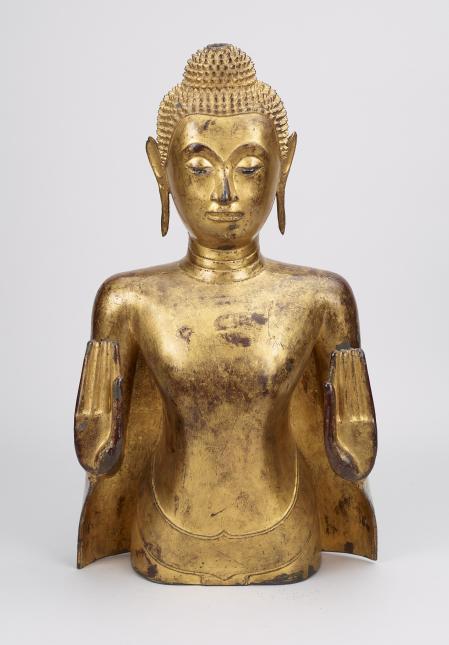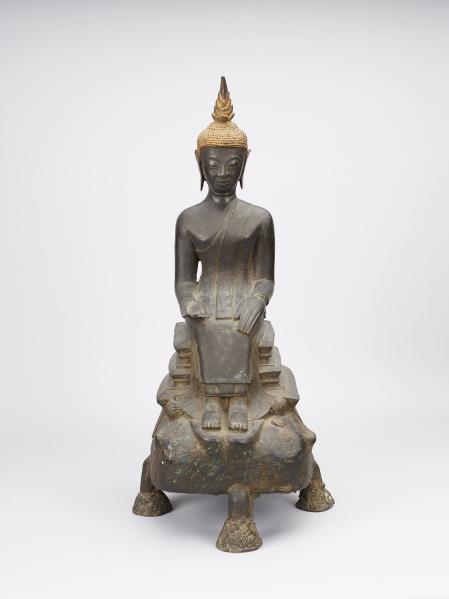Sculptures of the Buddha and of monks
The Japonisme that was popular in Europe in the second half of the 19th century not only influenced Modernist artists such as Vincent van Gogh, Paul Gauguin, and Claude Monet (Karl Ernst Osthaus collected their works) but also directed the museum founder’s attention to Asia and partly informed his collecting activities. Through members of the East Asian trading companies and the colonial powers’ expeditionary forces, objects had found their way onto the European art market that were not originally produced for trade, let alone for export. As a result, Osthaus managed to assemble an extensive group of Buddhist sculptures.
As one of the few countries in Southeast Asia, Thailand had successfully resisted European attempts to colonize it. Its traditional architecture and sculpture originated in the Sukhothai Kingdom (1238–1350), when Buddhism was supported by the Sukhothai royal dynasty. The country’s religious art was influenced by India, Cambodia, and China.
The representations of the Buddha followed strict rules that determined, for example, that the shoulders needed to be as round as the head, and the arms as supple as an elephant’s trunk. The hair top-knot shaped like a flame was meant as a sign of enlightenment. Representations of the founder of the religion also typically featured extended ear lobes and specific positions of the hands; raised hands with the palms pointing forward, for example, were meant to avert danger and dispel fear. The figures of monks depict Buddha’s followers (arhats) discussing his teachings or practicing meditation. Individual Buddha heads, as are to be found in many European collections, are not customary in traditional Buddhist art, as the human body is always represented in its entirety.
Share on


